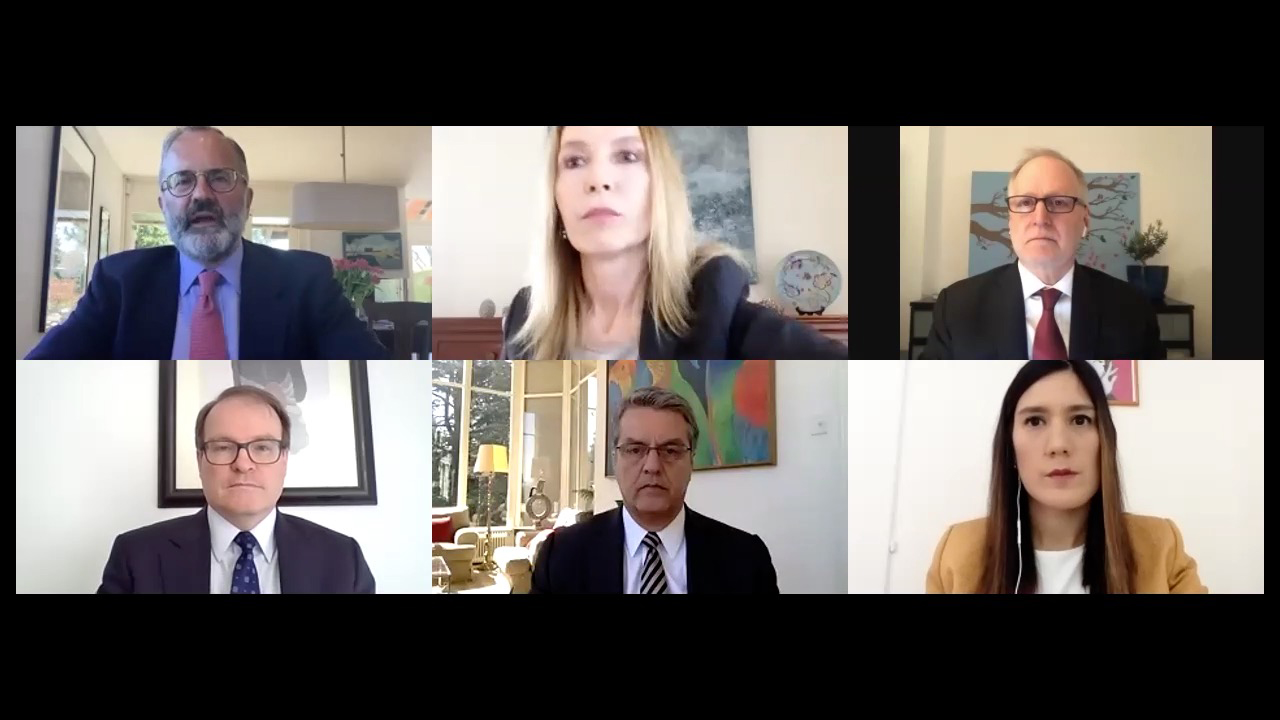SPEECHES — DG ROBERTO AZEVÊDO
More
Remarks by DG Azevêdo
Hello everyone. You have all seen the press release, so I will keep this short to allow more time for questions.
The format of this press briefing is not the only unusual thing about this year’s forecast. COVID-19 has upended the global economy, and with it, international trade.
The pandemic is first and foremost a health crisis. We at the WTO are profoundly saddened by the loss of life that has occurred around the world. A number of our colleagues have fallen ill with the virus. We share the anxiety that has shaken households everywhere.
This pandemic is also however a major social and economic crisis. Millions of people around the world have already lost jobs and income. Our forecast reflects the enormous ongoing shocks to supply and demand.
We project that trade in 2020 will fall steeply in every region of the world and across all sectors of the economy.
In light of the uncertainty about the pandemic’s precise duration and economic impact, forecasts are inevitably based on strong assumptions. As a result, our economists have developed two plausible scenarios instead of their usual single set of numbers.
In an optimistic scenario, our economists see the volume of global merchandise trade falling by 13% this year compared to 2019.
If the pandemic is not brought under control, and governments fail to implement and coordinate effective policy responses, the decline could be 32% — or more.
Again, let me emphasize that all these projections are highly uncertain given the large number of unknown factors at play here. For instance, credit market stresses are affecting the availability of trade finance.
Nevertheless, these numbers are ugly — there is no way around that. Comparisons with the financial crisis of 2008 and even the Great Depression of the 1930s are inevitable.
And that is why I want to emphasize that the underlying causes of this economic crisis are very different from the previous ones. Our banks are not undercapitalized. The economic engine was in decent shape. But the pandemic cut the fuel line to the engine. If the fuel line is reconnected properly, a rapid, vigorous rebound is possible.
Two factors will determine the strength of our recovery. One, how quickly the pandemic is brought under control. And two, the policy choices governments make.
A strong rebound is more likely if policymakers show businesses and households reason to believe the pandemic was a temporary, one-time economic shock. To do this, fiscal policy, monetary policy, and trade policy must all pull in the same direction. A turn towards protectionism would introduce new shocks on top of those we are currently enduring. Keeping markets open to international trade and investment would help economies recover more quickly.
Our economists estimate that, if the pandemic is brought under control relatively soon, and the right policies are in place, trade and output could rebound nearly to their pre-pandemic trajectory as early as 2021 — regardless of how steep the initial fall is. But there are other scenarios in which trade volumes post-recovery would remain below the pre-COVID trendline.
It is worth remembering that even before the first COVID-19 case was registered, we were not making the most of trade’s potential to drive growth. This new forecast we’re issuing today confirms that global merchandise trade was falling at a significant pace in the final quarter of 2019.
The WTO is one of many international organizations coming out with depressing statistics this week.
As we confront what may well be the deepest economic downturn of our lifetimes, we should aim to make the most of all potential drivers of sustainable growth to reverse the situation.
Governments around the world can and must lay the foundations for a strong and socially inclusive recovery. Trade — and international coordination more generally — will be important ingredients here. If countries work together, we will see a much faster recovery than if each country goes it alone.
Thank you all.
Share
Share

Trade forecast press conference
Problems viewing this page? If so, please contact [email protected] giving details of the operating system and web browser you are using.